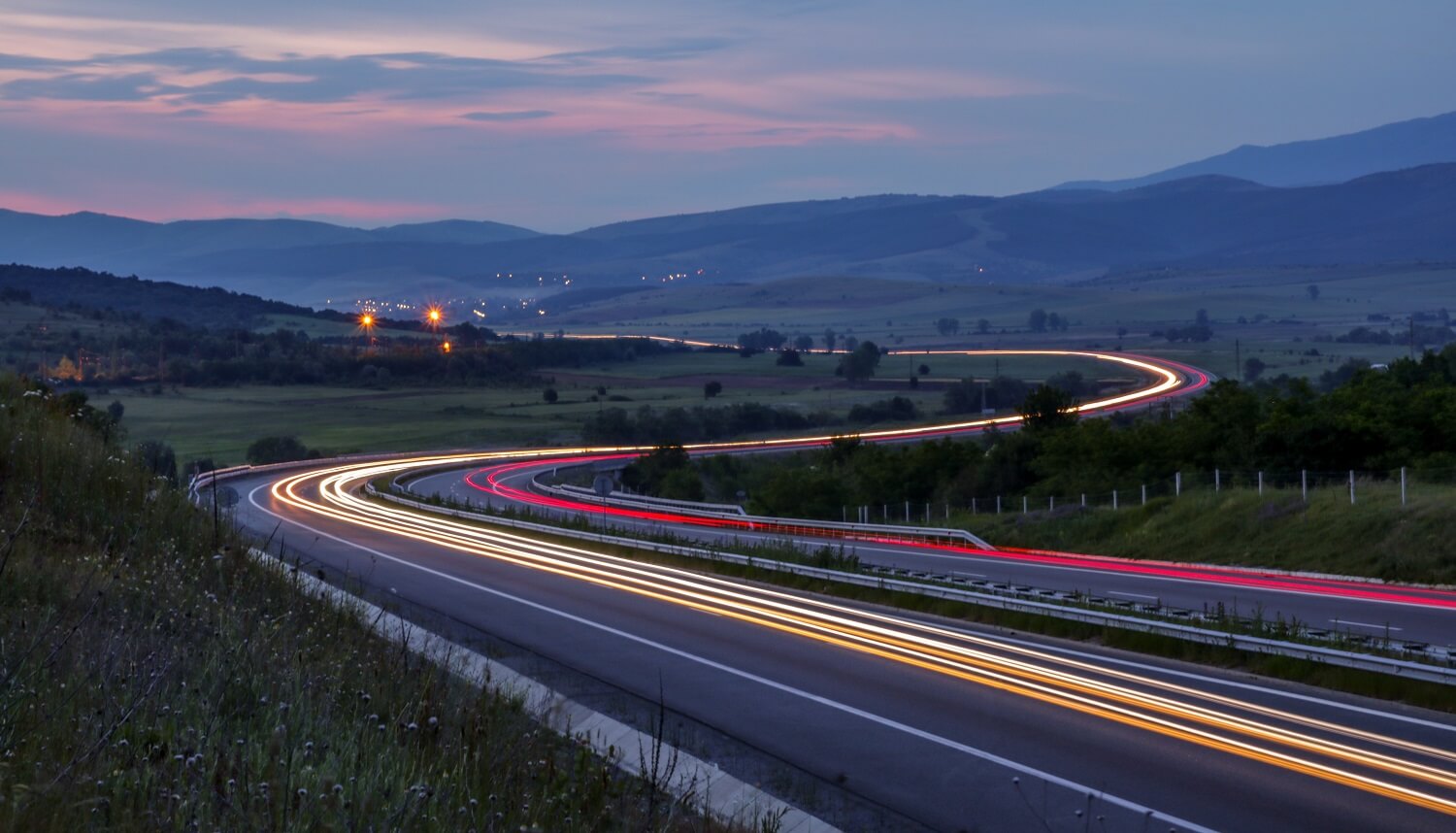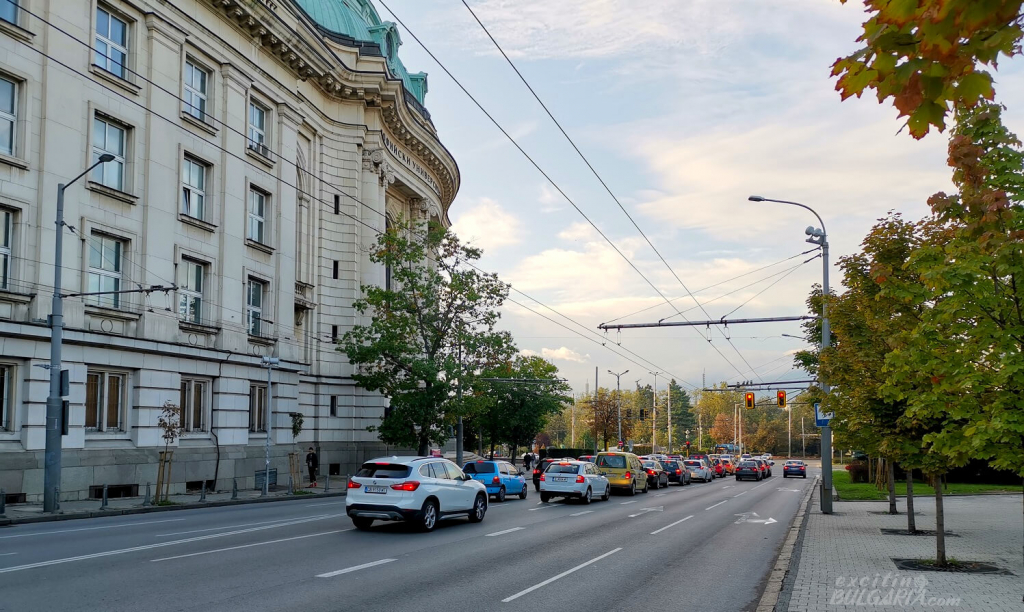Last updated on 8 January 2025
The best way to fully explore Bulgaria is travelling by car. Let’s see what you need to know about driving in the country.
Speed limits for cars
- 50 km/h within built-up areas
- 90 km/h outside built-up areas
- 120 km/h on expressways (dual carriageway without emergency lane)*
- 140 km/h on motorways (dual carriageway with emergency lane)**
*You won’t find too many of these as most of them are currently under construction or just planned
Road toll
If you’d like to explore Bulgaria by car, there is simply no way to avoid paying the road toll. Unlike in many other countries, not only the highways are paid but basically all roads are tolled except the municipal ones and some small country roads. Fortunately the toll is not too expensive though. See the price list below for passenger cars in 2025.
Bulgarian road toll prices in 2025 for cars up to 3.5t:
- 1 weekend*: 9 BGN
- 1 week: 13 BGN
- 1 month: 27 BGN
- 1 quarter (3 months): 48 BGN
- 1 year: 87 BGN
*The weekend vignette is valid from Friday 12:00 (noon) to Sunday 23:59
1 BGN= ~0.5 EUR
From 2019, Bulgaria uses an electronic vignette system. Before that, physical stickers were in use but those are not needed anymore. If you enter the country by car (from any direction), you can buy your e-vignette just after passing the border, or you can purchase it online using the official website here: https://web.bgtoll.bg/ (choose English language in the top right corner as the site default is Bulgarian).
TIP: We recommend pre-purchasing the e-vignette online as there can be long waiting times at the border kiosks during peak summer periods. You can buy the e-vignette 30 days before the desired start date.
There are around 300 fixed cameras across the country and many enforcement vehicles that continuosly monitor the payments. The penalty for using the paid road network without an e-vignette is 300 BGN (150 EUR).
There are two bridges between Bulgaria and Romania crossing the Danube that are tolled (using toll booths) separately from the e-vignette system. For passenger vehicles with up to 8+1 seats, New Europe Bridge between Vidin and Calafat (Romania) costs 12 BGN (6 EUR, 27 RON) while Danube Bridge between Ruse and Giurgiu (Romania) costs 6 BGN (3 EUR, 14 RON) per crossing.
Speed traps
Both fixed and mobile cameras (in traffic patrol cars, usually on roadsides) are used for measuring speed in Bulgaria. Be careful when entering urban areas or villages as speed traps are often installed right after the town/village name signs (which automatically limit the speed to 50 km/h). Also, usually there are no warning signs of speed cameras. Traffic violation fines range from 20 to 600+ BGN.
Required accessories
All passenger cars must be equipped with the following items:
- warning triangle
- reflective jacket
- fire extinguisher
- first aid kit
Snow chains might be required in the winter in some areas. Road signs will indicate if you have to apply them. The speed limit is 50 km/h when driving with snow chains on.
Important traffic laws and rules
- All passengers (including in the rear seats) must have their seat belts fastened at all times
- Low beam headlights or drl must be always on even during daytime, irrespectively of weather conditions
- Children under the age of 3 must be seated in a car seat
- Children between 3 and 12 cannot be seated in the front
- Driving age is 18, but many rental companies require the driver to be at least 21 years old
- Motorcyclists and their passengers must wear helmets at all times
A maximum of 0.05% Blood Alcohol Concentration (BAC) level is allowed when driving in Bulgaria. However, as a general rule, we strongly recommend not drinking any alcohol before driving in a foreign country. The BAC level is hard to calculate as it depends on many factors like sex, age, weight, food consumption etc. Police can randomly impose speed checks, alcohol and drug tests on roadsides anytime, anywhere.
International Motor Insurance Card (green card)
The green card certificate is not required in Bulgaria for vehicles registered in the EEA member countries, Andorra, Switzerland or Serbia. Motorists with a vehicle registered in one of the following countries must carry a physical copy of a green card to drive in Bulgaria: Albania, Azerbaijan, Belarus, Bosnia and Herzegovina, Iran, Israel, Moldova, Montenegro, Morocco, North Macedonia, Tunisia, Turkey, Russia, Ukraine and the United Kingdom.
Road infrastructure and safety
Motorways in Bulgaria are dual carriageways with emergency lanes. In 2022, Bulgaria had around 830 km of motorways (BG: Aвтомагистрала, Avtomagistrala) in operation while about 140 km more is already in construction. The only ones being fully complete are A1 (called Trakia) between Sofia and Burgas and A4 (called Maritsa) between Chirpan (A1) and the Turkish border.
There is another defined type of high speed roads called expressways (BG:Скоростен път, Skorosten pat) that have no emergency lanes. These are mostly in the planning phase yet with only a few kilometers being in operation.
Motorways have green road signs, all the other roads use blue. Settlement names and directions are almost always written in both cyrillic and latin, but small roads might have cyrillic-only signs.
In general, the road network is in poorer condition than the western european ones. You can expect very bumpy sections with heavily worn pavement and large potholes appearing out of nowhere. Municipal roads, city streets can also have deep potholes and uneven surface. However, the situation about Bulgarian roads is ofter over-dramatized. Primary roads, that are numbered with one or two digits, are usually ok to drive.
Another thing to be aware of is the driving culture. Motorists are much more aggressive than you might be used to. Risky overtakes and excessive speeding are very common. According to the European Commission, Bulgaria had the second-worst road fatality rate in the EU in 2018, so be careful.
Petrol stations
Petrol stations are located quite densely, you can find one every 10-20 kilometers. Fuel prices in Bulgaria are one of the lowest in the European Union. The common auto gas type is LPG and is available almost everywhere. Only a few stations provide CNG.
TIP: Just as a precaution, we recommend using one of the following reliable chains: Lukoil, Shell, OMV, Petrol, EKO, Gazprom or Rompetrol. These companies usually have nice shops and clean toilets, while fuel quality is guaranteed as well.
EV charging stations
As of 2022, there are about 50 electric vehicle charging stations in Bulgaria. Most of these are provided by charging network companies such as Fullcharger or Eldrive. Supermarket chain Kaufland and some petrol stations also have EV charging points. There are 2 Tesla Supercharger locations in Bulgaria, one in Sofia and one in Plovdiv.




